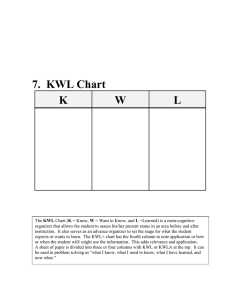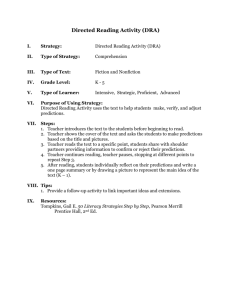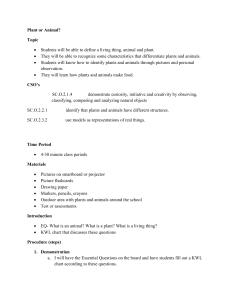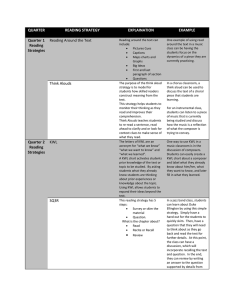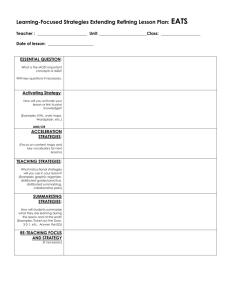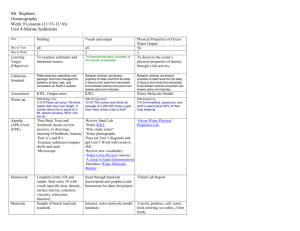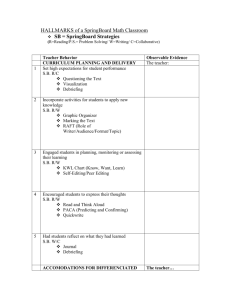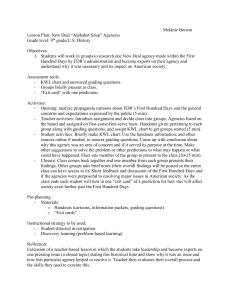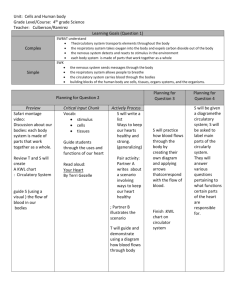Lesson plan
advertisement
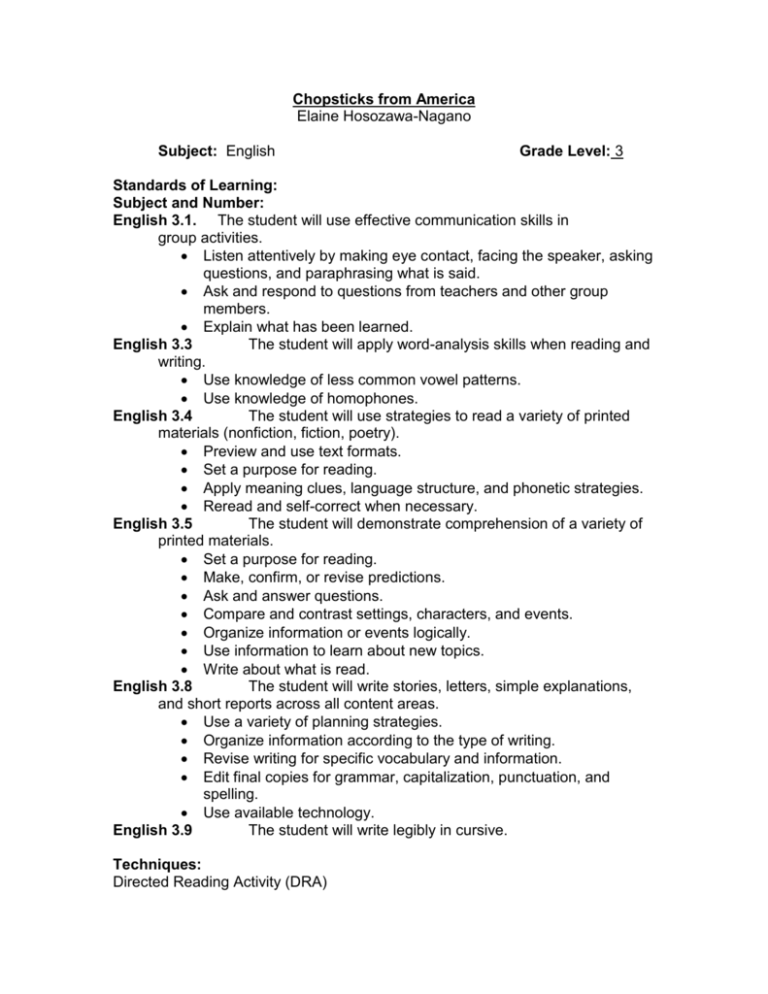
Chopsticks from America Elaine Hosozawa-Nagano Subject: English Grade Level: 3 Standards of Learning: Subject and Number: English 3.1. The student will use effective communication skills in group activities. Listen attentively by making eye contact, facing the speaker, asking questions, and paraphrasing what is said. Ask and respond to questions from teachers and other group members. Explain what has been learned. English 3.3 The student will apply word-analysis skills when reading and writing. Use knowledge of less common vowel patterns. Use knowledge of homophones. English 3.4 The student will use strategies to read a variety of printed materials (nonfiction, fiction, poetry). Preview and use text formats. Set a purpose for reading. Apply meaning clues, language structure, and phonetic strategies. Reread and self-correct when necessary. English 3.5 The student will demonstrate comprehension of a variety of printed materials. Set a purpose for reading. Make, confirm, or revise predictions. Ask and answer questions. Compare and contrast settings, characters, and events. Organize information or events logically. Use information to learn about new topics. Write about what is read. English 3.8 The student will write stories, letters, simple explanations, and short reports across all content areas. Use a variety of planning strategies. Organize information according to the type of writing. Revise writing for specific vocabulary and information. Edit final copies for grammar, capitalization, punctuation, and spelling. Use available technology. English 3.9 The student will write legibly in cursive. Techniques: Directed Reading Activity (DRA) Strategies: Activate prior knowledge Apply background knowledge Predict/Confirm Skills: Use context clues Note details Increase vocabulary Use details to predict General Objectives: The student will: 1. Use context clues to define unknown words 2. Predict what the story will be about before reading, and during reading 3. Apply prior knowledge and discuss connections 4. Write a retelling of the story 5. Read aloud Chopsticks from America 6. Define new/difficult vocabulary Specific Objectives: The student will: 1. Complete the KWL Chart 2. Listen and participate in DRA 3. Participate in discussion 4. Predict, read and prove 5. Retell the story through writing 6. Record predictions on chart 7. Record new vocabulary and definitions on chart 8. Share retellings with classmates Procedures for Teacher: The teacher will: Before Reading: 1. Set purpose for reading the story after predicting and discussing by orally stating reasons for reading. 2. Link to prior knowledge. Have students discuss what they already know about Japan, moving from one place to another, having a sibling, and your father changing jobs. 3. Motivate the readers. Tell the students that they will learn how a brother and sister learn from each other. Tell students that this story will teach about Japanese culture. 4. Predict what the story will be about just by reading the title and looking at the cover of the book. 5. Fill in K and W in KWL chart for what is already known and what students want to know During Reading: 1. Conduct a Directed Reading Activity (DRA). 2. Divide story into sections for reading (a page or two at a time). For example: Predict some of the changes the children will make after they move. Is it realistic to think that a family would move because of a job? Describe how the mom could have helped Tiffany “deal” with the move. What do you think will happen next. 3. Students read orally and answer questions. Allow discussion after the questions. 4. Predict what will happen next before continuing, have students validate why they are making each prediction. As the students predict, record the predictions on a chart for later reference. Read and confirm. Return to predictions and discuss. After Reading: Respond to the text: 1. Question students about what was read. Repeat the questions asked during reading and any questions that came up during the discussion. 2. Discuss what was learned, which predictions were correct, and new vocabulary. Exploring the Text: 1. Locate new vocabulary. (Bachan, Jichan, udon, bento, Pekingese, convinced, argued, meager, preferred, attempt, Chihuahua) According to student need, add/delete vocabulary. 2. Apply context clues to tell meaning of the vocabulary. Reread selections with new vocabulary. Have students tell the definition of the new vocabulary in their own words. Using chart paper record the student responses. Apply the text: 1. Use new vocabulary in written retelling. 2. Fill in the L in KWL chart for what was learned. Steps for the activity: Written Retelling: 1. Students will create a time line detailing the important events of the story. (Leaving America, living in Japan, seeing Tokyo for the first time, buying a pet, adjusting to living in Japan) 2. Using the brainstorming web, the students will begin writing paragraphs. 3. The students will peer edit. 4. The students will share their stories. KWL Chart: 1. The students will fill in the KWL chart at different times during the lesson. 2. The students will record what they know, what they want to know and what they learned about Japan through reading the story. Closing: The lesson will end with the teacher discussing the instructions for the writing assignment and reviewing the writing processing. Evaluation: Students will be evaluated on their writing assignment using a rubric collaboratively designed by the teacher and students. For example: categories may include: grammar, accuracy of facts, correct use of paragraphs, interesting. Scale may include exceptional, acceptable, poor-- with each having a point value. Materials: Chopsticks Form America, Elaine Hosozawa-Nagano KWL charts Extension: Have students write a journal entry from the main character’s (Tiffany) point of view from the beginning, middle and end of the story about how she was feeling about moving to Japan. Lesson plan written by: Julie Dalton Longwood College
